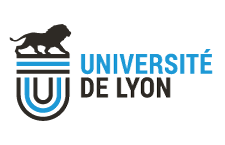ECOFECT > Presentation > Teams
Staphylococcal Pathogenesis
Inserm U1111 - UMR CNRS 5308
- Address :
- International Center for Infectiology Research (CIRI)
- Email :
- francois.vandenesch@univ-lyon1.fr
- Trusteeship :
- Inserm, CNRS, ENS Lyon, UCBL,
Organization
Team leader: François VandeneschAxe(s) of research
Staphylococcal diseases represent a major threat for public health worldwide, accounting for ca. 30% of nosocomial and community-acquired infections. Staphylococcus is the best model of a pyogenic and toxigenic bacteria replicating mostly extracellulary; its pathogenesis depends on the expression of numerous adhesins which bind extracellular matrix proteins and also the synthesis of a large set of exoproteins such as the staphylococcal superantigens, the hemolysins, the exfoliative toxins, the leucocidins (such as the Panton Valentine leucocidin (PVL), and others. Expression of these virulence factors is tightly regulated during in vitro culture as well as during the course of infection, by a complexe regulatory network involving transcriptional factors and regulatory RNAs.
Our general research objective is a global approach of staphylococcal diseases and we have developed an integrative approach from bed to bench and reverse to better understand the mechanisms of diseases and microbial clearance.
Three research levels are intertwined :
1-clinical microbiology and molecular epidemiology of staphylococci, clinical characteristics of new and/or emerging staphylococcal diseases. This research benefits from the National Reference Center for Staphylococci network of clinicians and microbiologists, and also from the collection of strains and biological materials collected through the activity of the NRCS.
2-physiopathology of staphylococcal diseases and new therapeutic approaches:
2-1- physiopathology of PVL-associated diseases, especially the necrotizing pneumonia. We have in the past identified and characterized this severe disease, demonstrated the association of the Panton Valentine leukocidin with necrotizing pneumonia and are currently deciphering the innate immune response during necrotizing pneumonia and searching for the host receptor for PVL (in collaboration with Thomas Henry) as well as looking for a genetic predisposition to this disease (in collaboration with C. Picard, L. Abel and J.L. Casanova). In addition we are deciphering the mechanism of a moonlighting function of the PVL signal peptide as a bacterial adhesin for heparan sulfates. We are also studying the antibiotic-mediated modulation of expression of PVL and other virulence factors at the molecular level.
2-2- physiopathology of bone and joint infections caused by S.aureus. Our objective is to explore the intimate interaction of S.aureus with osteoblasts that could be altered and/or invaded by S. aureus and could be the site of sanctuarization and long-term survival of S. aureus and, osteoclasts, that have hematopoietic origin and which differentiation and/or activation could be modulated by S.aureus.
3-fundamental bacteriology aiming to understand the structure-function of the regulatory RNAs as well as the co-factors that are involved in the regulation of expression of target genes.
Key words: Staphylococcus, Toxins, RNA, Regulation, Microbial Pathogenesis, Microbial Epidemiology
Our general research objective is a global approach of staphylococcal diseases and we have developed an integrative approach from bed to bench and reverse to better understand the mechanisms of diseases and microbial clearance.
Three research levels are intertwined :
1-clinical microbiology and molecular epidemiology of staphylococci, clinical characteristics of new and/or emerging staphylococcal diseases. This research benefits from the National Reference Center for Staphylococci network of clinicians and microbiologists, and also from the collection of strains and biological materials collected through the activity of the NRCS.
2-physiopathology of staphylococcal diseases and new therapeutic approaches:
2-1- physiopathology of PVL-associated diseases, especially the necrotizing pneumonia. We have in the past identified and characterized this severe disease, demonstrated the association of the Panton Valentine leukocidin with necrotizing pneumonia and are currently deciphering the innate immune response during necrotizing pneumonia and searching for the host receptor for PVL (in collaboration with Thomas Henry) as well as looking for a genetic predisposition to this disease (in collaboration with C. Picard, L. Abel and J.L. Casanova). In addition we are deciphering the mechanism of a moonlighting function of the PVL signal peptide as a bacterial adhesin for heparan sulfates. We are also studying the antibiotic-mediated modulation of expression of PVL and other virulence factors at the molecular level.
2-2- physiopathology of bone and joint infections caused by S.aureus. Our objective is to explore the intimate interaction of S.aureus with osteoblasts that could be altered and/or invaded by S. aureus and could be the site of sanctuarization and long-term survival of S. aureus and, osteoclasts, that have hematopoietic origin and which differentiation and/or activation could be modulated by S.aureus.
3-fundamental bacteriology aiming to understand the structure-function of the regulatory RNAs as well as the co-factors that are involved in the regulation of expression of target genes.
Key words: Staphylococcus, Toxins, RNA, Regulation, Microbial Pathogenesis, Microbial Epidemiology
Domains
Microbial Pathogenesis
Microbial epidemiology
Microbial epidemiology



 Welcome
Welcome Communication
Communication Contacts
Contacts Job offers
Job offers links
links WebAdmin
WebAdmin